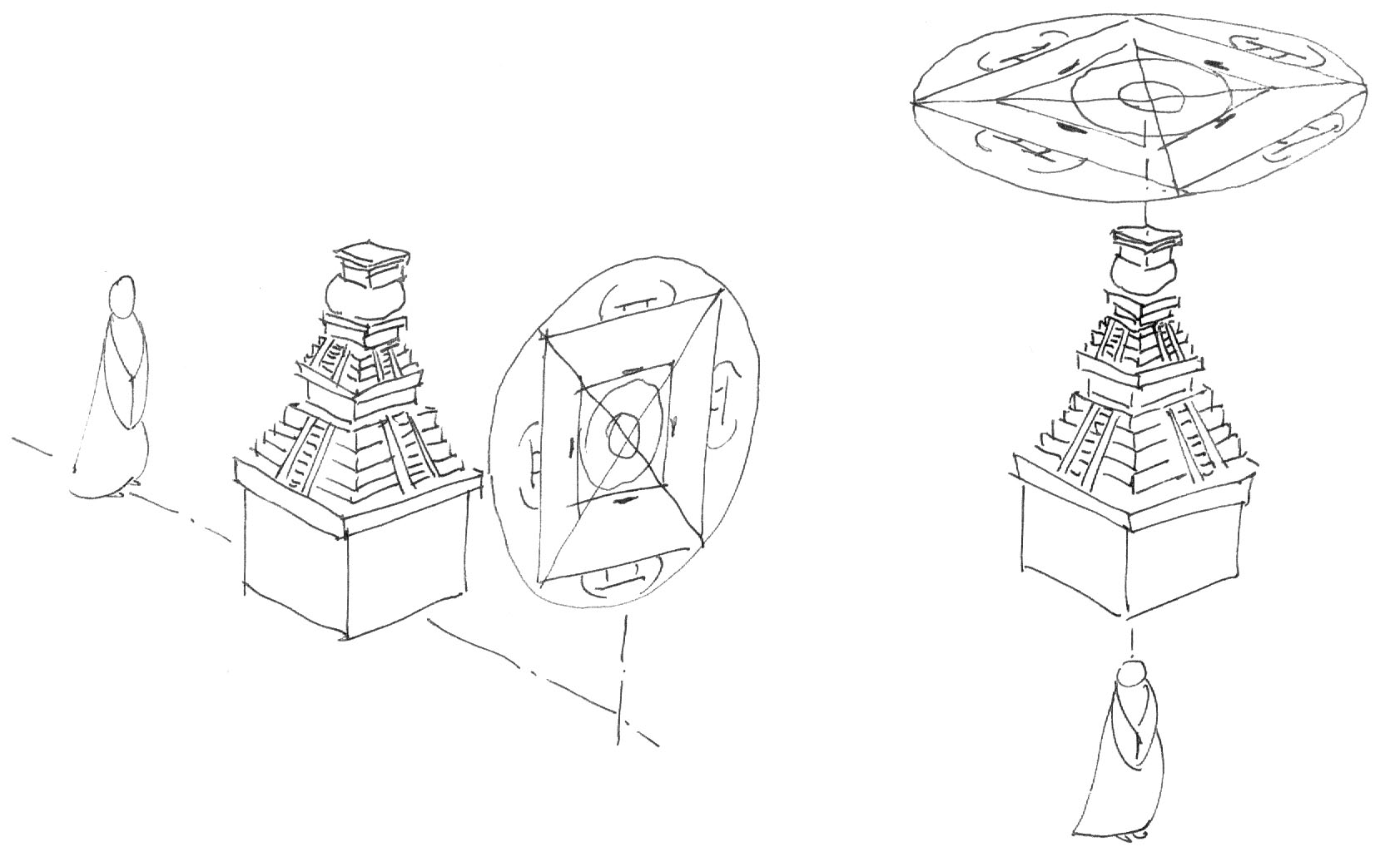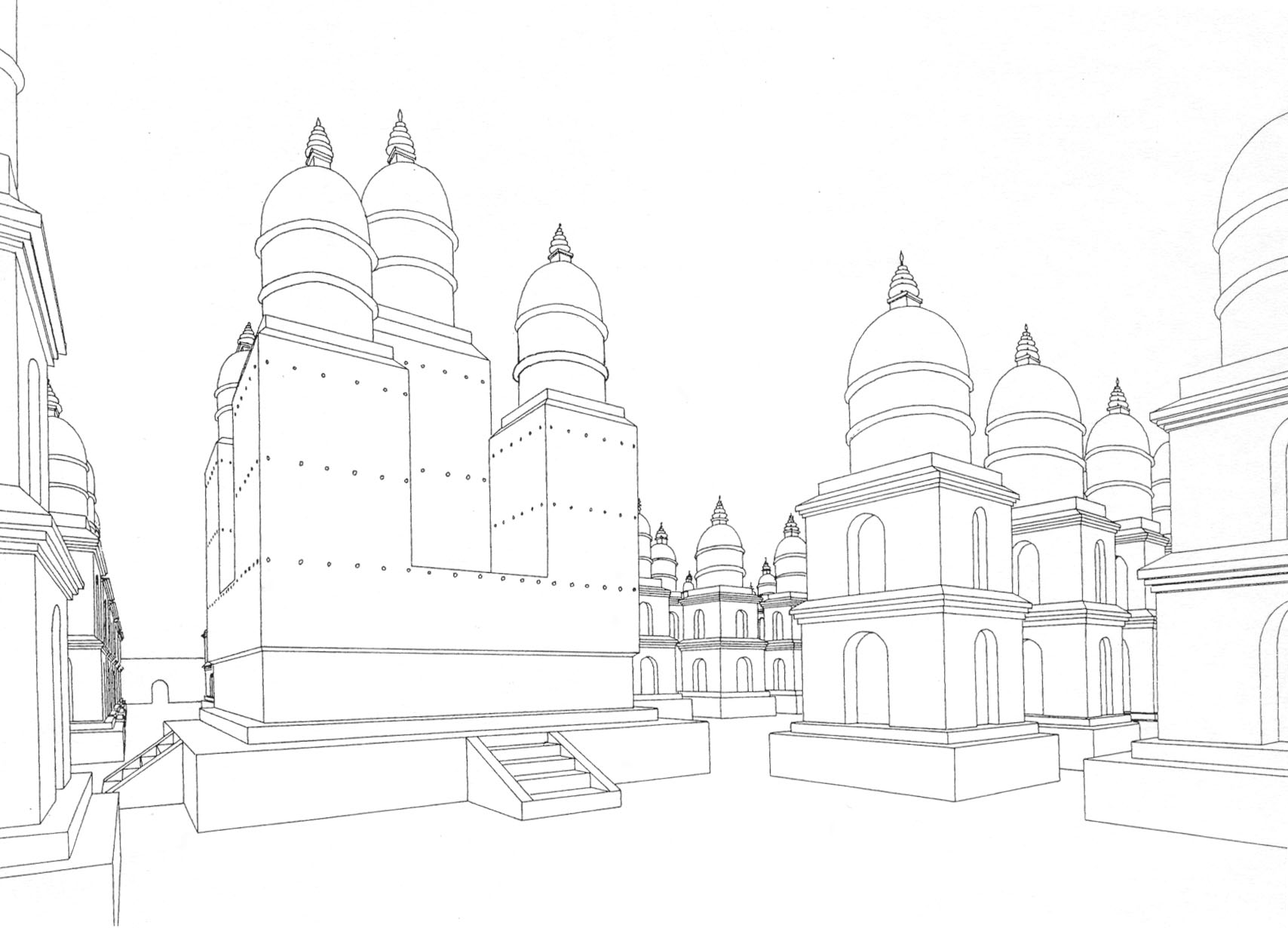I came to know Gerald Kozicz because of the panel on Reuse I am organising for the EAAA conference in September 2014 together with Cristina Bignami and Julia Hegewald. We started discussing about his paper for the panel and then Gerald has been generous enough to send me and discuss per email with me many of his other articles. His papers impressed me because they were surprisingly different from my prejudices about art history. This unconventionality, both in Gerald’s research and in his career, made me desire to interview him.
EF: Would you tell us something about your academic background?
GK: I have always been interested in Descriptive Geometry, Drawing, History…and in Asia. Since I wanted to draw, I have studied Architecture. And for the same reasons I tried to study Japanese and have practiced calligraphy. After my degree, which I prepared in Japan, I started working on my dissertation, which focused on environmental friendly sky-scrapers in Hong Kong (thus, again in Asia) and at the same time I joined a research project at the TU Graz about Buddhist architecture in the Western Himalaya Region. Well, my participation in the latter ended abruptly by the end of 2001. Then, in 2004 I contacted several reknowned scholars and also visited Prof. Ernst Steinkellner in Vienna. I presented to him my ideas about working on Tibetan architecture and he supported me. I wrote my first project for the FWF and it has been approved. Since then, I work with stand-alone projects financed by the FWF (the Austrian Science Fund).
EF: In fact, it appears clearly from your work that plans, space, and drawing play an important role for you.
GK: I always start my articles and presentations with some drawings, plans or models. The text just flows automatically once these are ready.
EF: Two things have particularly impressed me in your articles. The first one is importance of architectonic space.
GK: Yes, one cannot understand architecture only through the surfaces, as if one were an ant climbing on the walls and unable to appreciate the three-dimensionality of space. The lantern ceilings which reproduce a maṇḍala in such a way as to unable the practitioner to actually be in its centre are a good example. One cannot achieve it just in a two-dimensional painting. And in order to understand the symbolic value of such a maṇḍala, one needs to take into account the possibilities it opens for practitioners, possibilities which one would overlook if one were to focus only on the beauty of the paintings.

the sketch shows the approach of the practicioner to a two- or three-dimensional maṇḍala (drawing by GK)
EF: The other point which impressed me is the fact that your articles are not only descriptive. As in the example you just mentioned, one sees how you connect art and architecture with their symbolic value.
GK: I try to focus on the vision of the one who thought about building a certain temple, of what he wanted to achieve. Once I have produced a plan and then also a three-dimensional model of the building many things become apparent to me. For instance, it becomes clear that the 100-Stūpa temple must have impressed its visitors who were at first lost and needed to look for the main stūpa. This conveys the idea of the stūpa as a fundamental axis mundi (see image).
EF: Now to your career. You have the uncommon specificity (among researchers) of having taken parental leave for two years when your daughter was born.
GK: Not even I did it, but I am so thankful for that. That step back from the academic milieu enabled me to focus on what I really liked, again, on drawing, descriptive geometry, history and Asia. And while my daughter slept I drew and wrote my first FWF application, on the development of the Vajrāyāna stūpa-architecture.
EF: Your work is so complex that I wonder how you manage to do all on your own…
GK: I have a good network of people I exchange information with. I show them my models or support them with plans and they help me with Tibetan inscriptions, material analysis of colours and so on. I do not value “interdisciplinarity” if it only means juxtaposition of different perspectives, but sharing expertise is of fundamental importance.
EF: You managed to find your own area of research bridging Tibetology, Buddhist studies, Art History, Architecture… What would you recommend to younger scholars?
GK: To ask themselves what motivated them at first. I managed to unite all my passions in one research and this is what makes it possible for me to enjoy my work.


Comments and discussions are welcome. Be sure you are making a point and contributing to the discussion.